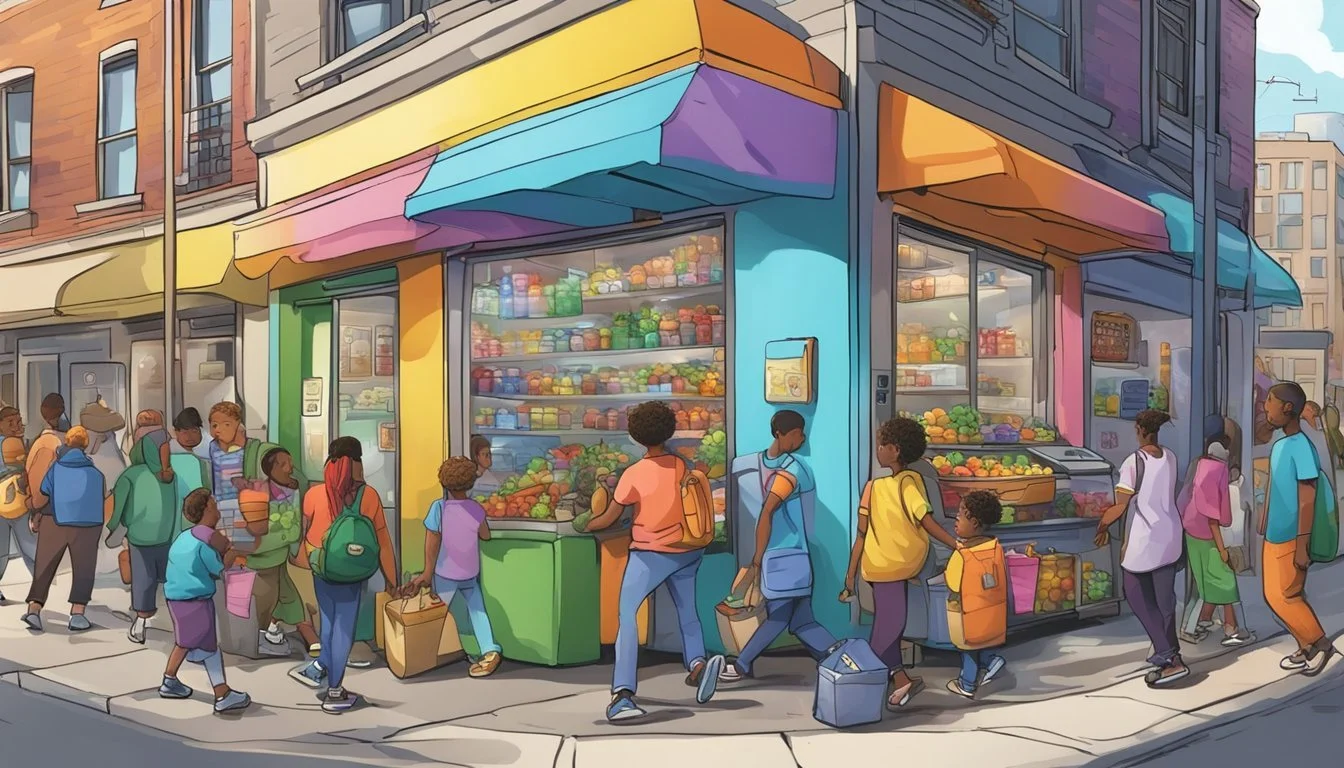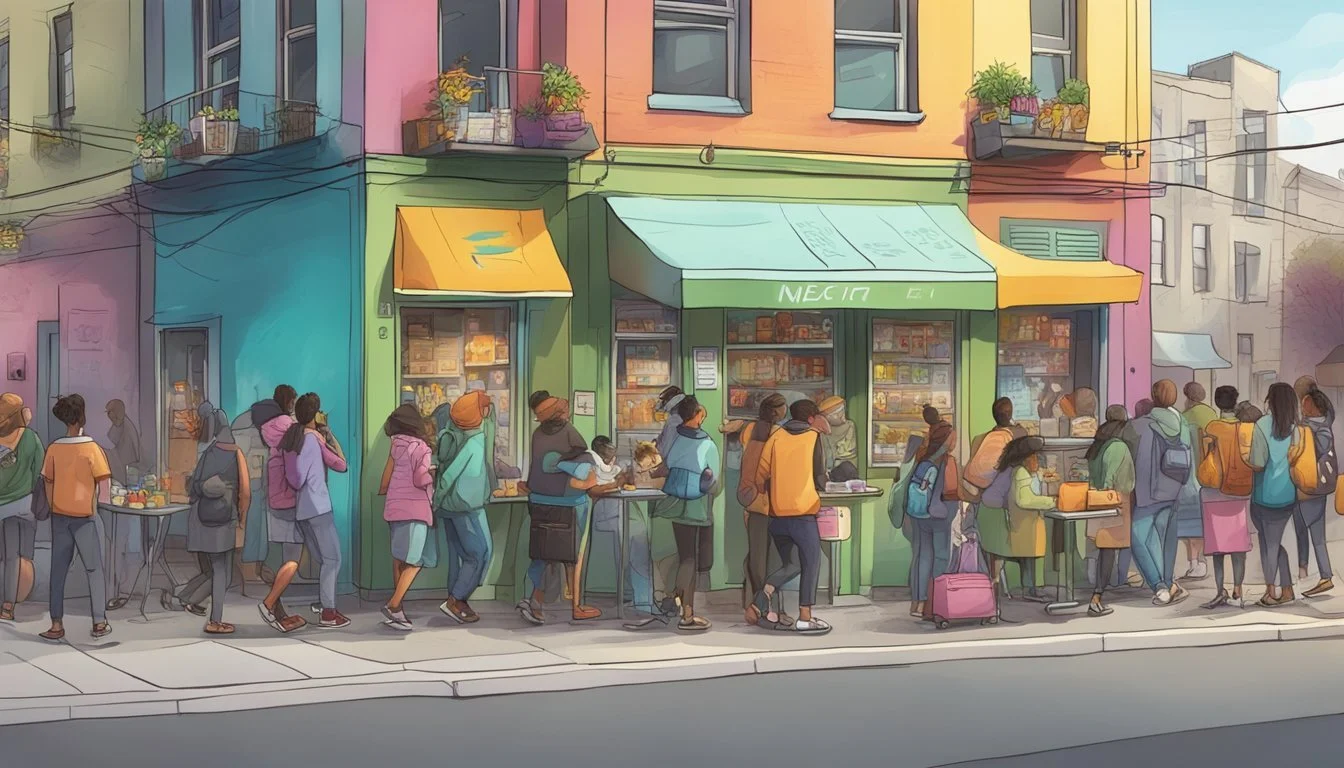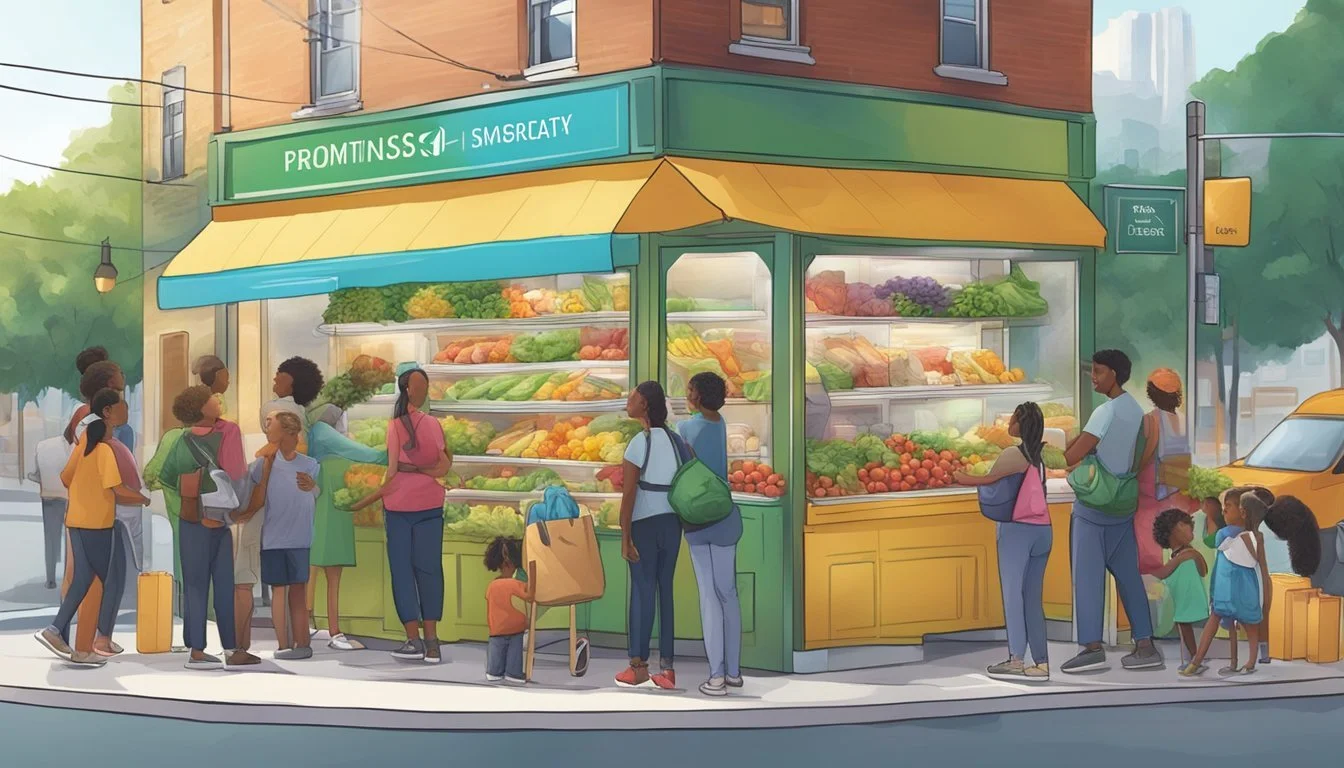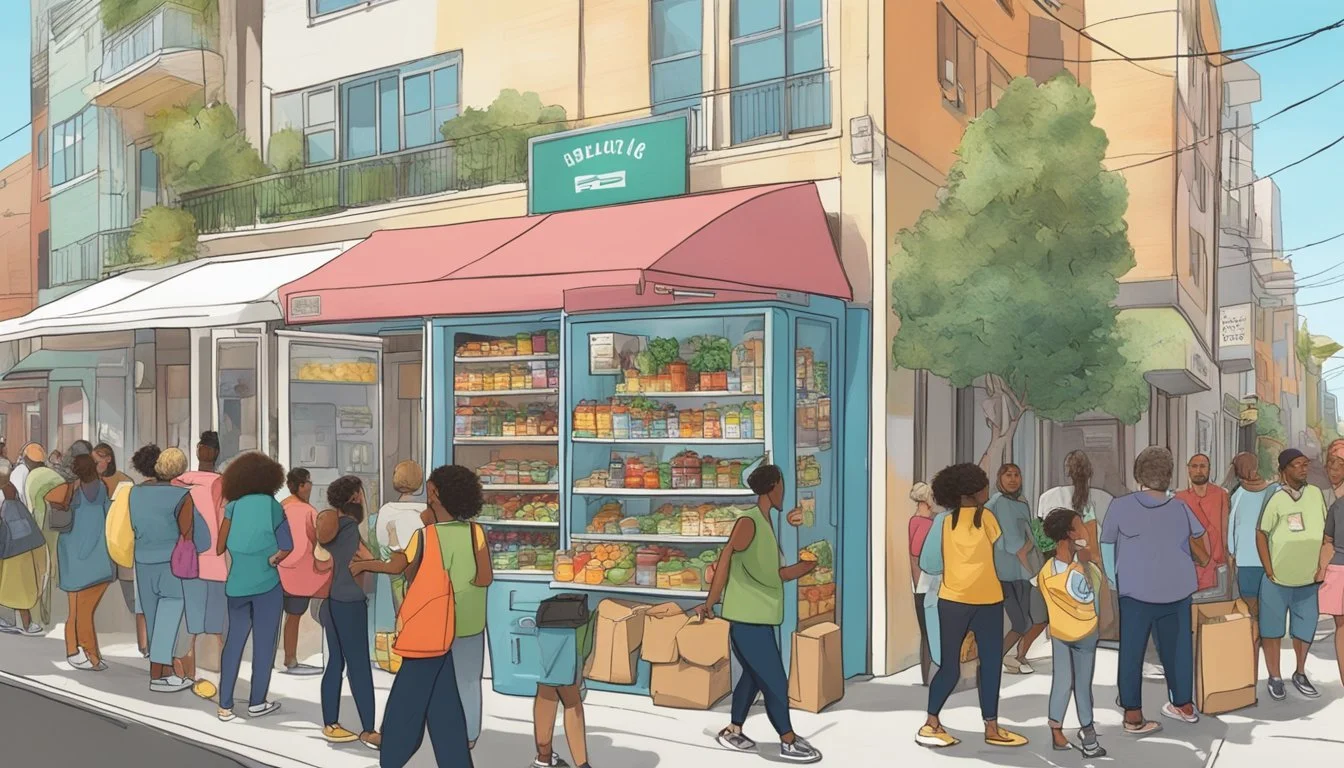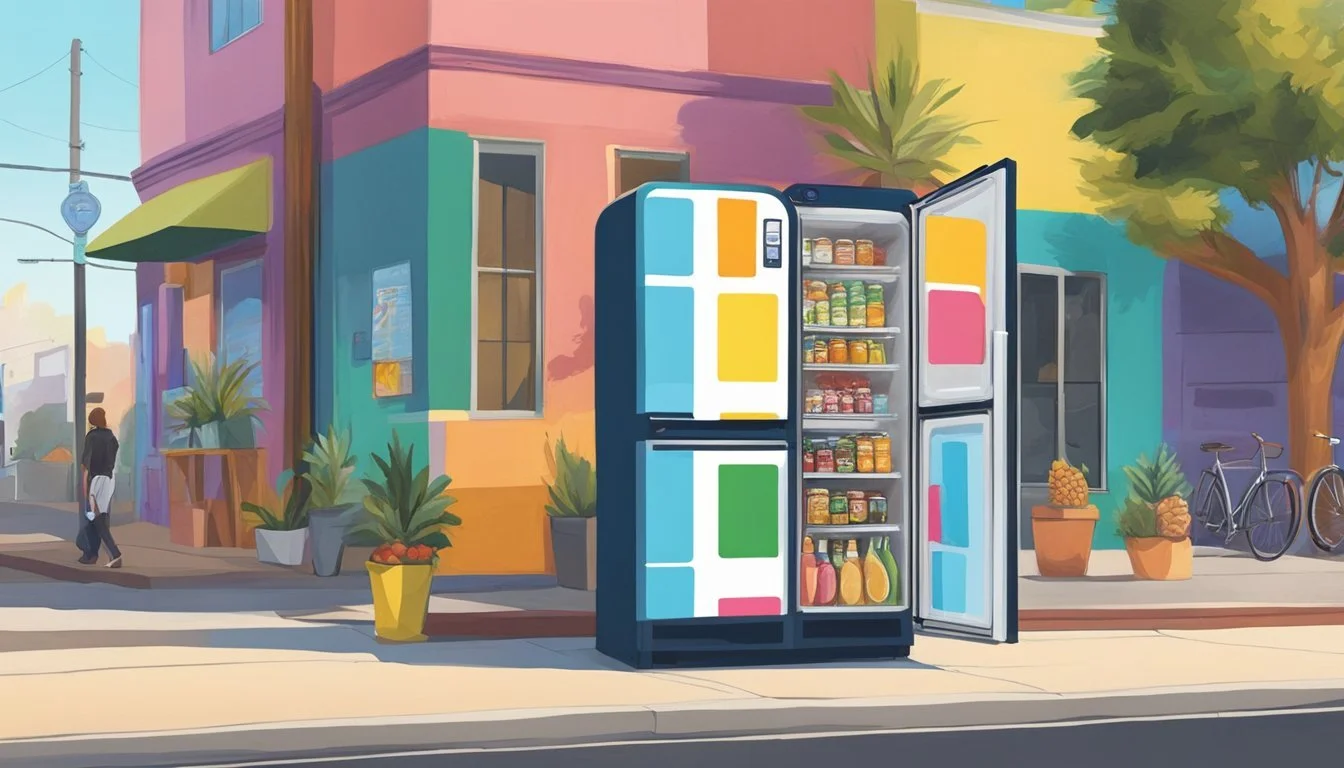Long Beach, CA Community Fridge
Nourishing Neighborhoods Together
In the heart of Long Beach, a unique approach to community support and food sharing has emerged. Strewn along city sidewalks, a network of community refrigerators offers a straightforward solution to address food insecurity. These refrigerators provide free, accessible food to those in need, embodying a powerful symbol of grassroots solidarity. Powered by the community, they stand as a testament to collective care, as locals volunteer their space and energy to maintain their operation.
The inception of the Long Beach community fridge movement mirrors a larger trend in urban environments, particularly in response to the exacerbated needs during the pandemic. Basic and nutritious sustenance is placed in the fridges by residents, and the locations become more than just points of food distribution—they evolve into hubs of community engagement and mutual aid.
As the fridges pop up around Long Beach, the project’s integration with the city's everyday life grows. The initiative thrives on the involvement of local organizers, businesses, and everyday citizens. They step up to host a fridge, donate food, and ensure that the fridges remain clean and stocked. Through this communal effort, the project not only feeds bodies but also nurtures a sense of belonging and community in Long Beach.
Background and Purpose of Community Fridges
Community fridges serve as a grassroots solution to food insecurity, offering free access to food for those in need. In Long Beach, these fridges have become a crucial resource during challenging times.
Defining Community Fridges
Community fridges are publicly accessible refrigerators where individuals can donate food or take food as needed with no expectation of payment or return. The concept behind these resources is grounded in mutual aid, allowing community members to share and help alleviate hunger amongst their neighbors.
Importance in Long Beach, CA
In Long Beach, California, the presence of community fridges holds a significant place. Food insecurity affects a portion of Long Beach residents, and these fridges provide an immediate, no-cost option for individuals and families to obtain perishable and non-perishable food items. The initiative not only helps those in need but also fosters community spirit and solidarity.
Origins and Growth During the Pandemic
Community fridges blossomed in response to the increased need during the pandemic. The challenges brought on by COVID-19 led to job losses and economic strain, exacerbating food insecurity. As a result, community fridges emerged as a rapid response mechanism, with Long Beach seeing these fridges installed to support residents facing hardship during this period. Their use and importance grew as the pandemic continued, reflecting the community's resolve to support its members in times of crisis.
Operational Aspects of Community Fridges
Community fridges in Long Beach operate through collaborative efforts that ensure their regular maintenance, proper sanitation, and efficient coordination among volunteers. The fridges also require careful consideration of electrical needs and strategic location placement to remain accessible and functional for the communities they serve.
Maintenance and Sanitation Practices
Proper maintenance and sanitation are critical for the effectiveness and safety of the community fridges.
Maintenance: Regular checks are performed to ensure that the refrigerators are functioning optimally. This includes monitoring temperatures and repairing any technical issues promptly.
Sanitation: Volunteers adhere to a strict cleaning schedule to maintain hygiene standards. This involves routine interior and exterior cleaning, removal of expired items, and ensuring that food donations comply with safety guidelines.
Volunteer Coordination
Volunteers are the backbone of the community fridge operations.
Roles: They are organized into groups responsible for various tasks, including stocking, cleaning, and monitoring the fridges.
Scheduling: A structured timetable is in place to manage volunteers' shifts, assuring there's always someone to oversee the fridge's operation and address immediate concerns.
Electrical and Location Considerations
The operation of community fridges relies on careful planning regarding electricity usage and placement.
Electricity: The host site provides electricity needed to keep the fridge running 24/7. A contingency plan is set for power outages to prevent food spoilage.
Location: Site selection criteria include high pedestrian traffic, safety, and accessibility to those in need. Refrigerators are placed on properties with owners' consent, ensuring legal compliance and community support.
Contributions and Support
The Long Beach Community Fridge program thrives on the support and contributions from individuals, local businesses, and organizations. Their shared vision of combating food insecurity brings various facets of the community together to provide free and accessible food to those in need.
Donating to Long Beach Community Fridges
Individuals and local food producers donate produce and other food items to the Long Beach Community Fridges. These contributions are critical for the program's sustainability, allowing for a constant supply of fresh options for anyone in need. To donate, individuals simply need to bring their food donations to the fridge locations.
Partnerships with Local Businesses and Organizations
Restaurants and local businesses frequently partner with the community fridge program. By contributing excess food or sponsoring a fridge, they play a pivotal role in the success of the initiative.
Organizations also support through coordination efforts and financial help to ensure the fridges remain operational and well-stocked.
Community Involvement and Culture
Community involvement extends beyond food donation, encompassing volunteer work for maintenance and spreading awareness about the program.
The initiative has fostered a culture of sharing and communal responsibility in Long Beach, highlighting the city's spirit and dedication to supporting its residents.
Legal and Health Regulations
In Long Beach, California, community fridges are subject to specific legal and health regulations to ensure public safety and compliance with local standards.
Permit and Food Safety Requirements
Permit Requirements: The City of Long Beach requires that any community fridge operation obtain the necessary permits, typically from the health department, to ensure they meet food safety standards. Food handling permits are essential for individuals managing and stocking the fridge, ensuring they are trained in proper food safety techniques.
Food Safety Regulations: The Health & Human Services in Long Beach enforces state and local food safety regulations to minimize health risks. These regulations mandate that all food items are stored at safe temperatures and handled with proper sanitation practices. Freedges, or community fridges, ensure food safety by sharing non-perishable items and produce that do not require stringent temperature controls, reducing the risk of foodborne illnesses.
Public Space and City Regulations
Public Right of Way: The placement of community fridges must adhere to city guidelines concerning the public right of way. Accessibility is paramount, meaning that fridges should not obstruct pedestrian traffic or violate any public space usage policies.
City and Building Department Regulations: The Long Beach Building Department enforces compliance with electrical codes and structural safety. Community fridges must be connected to power sources that are up to code, and installations should not undermine the integrity of city infrastructure. Any structural modifications for setting up a community fridge would involve the Building Department's approval to ensure that they do not pose safety hazards.
Through careful adherence to these regulations, Long Beach community fridges can provide a valuable resource to the community while maintaining public health and safety.
Community Impact and Testimonials
Community fridges in Long Beach, California, are becoming vital in addressing food insecurity, supporting community cohesion, and forming part of the greater Los Angeles mutual aid landscape.
Addressing Food Insecurity in Long Beach
The Los Angeles Community Fridge initiative set foot in Long Beach as a direct response to the growing issue of food insecurity. Volunteers and community members supply the fridge, ensuring that those in need have access to free and nutritious food. The presence of a community fridge on Long Beach sidewalks is a testament to the city's proactive approach to a problem that affects many residents.
Stories from Volunteers and Beneficiaries
Volunteers play a crucial role in the operation of the Long Beach community fridges, often witnessing first-hand the difference their work makes. Beneficiaries' testimonials underscore the project's significance, recounting how access to these resources has eased their struggles with food scarcity. Both groups highly regard the initiative for its simplicity and direct impact on individuals and families' lives.
Role in the Greater Los Angeles Area
Long Beach community fridges are part of a larger network of mutual aid in the Los Angeles area. This network enhances collective efforts against food insecurity and promotes united community actions. The fridges not only serve as food distribution points but also represent the solidarity and shared responsibility that characterizes the spirit of Greater Los Angeles.
Extended Effects and Activities
In Long Beach, the community fridge initiatives have not only addressed immediate food insecurity but have also sparked wider social impacts and activities extending beyond simple food distribution.
Influence on Public Awareness and Policies
Community refrigerators in Long Beach have become a symbol of mutual aid efforts, drawing attention to the persistent issue of food insecurity. These grassroot initiatives have led to increased public awareness, prompting discussions among policymakers about long-term solutions for hunger. Moreover, they serve as a tangible demonstration of community solidarity, prompting individuals to consider the importance of collective welfare in policy making.
Educational Programs and Outreach
Through strategic placement and community engagement, the Long Beach community fridges have enabled grassroots organizations to provide education on nutrition and food resources. They routinely organize outreach programs that intertwine with voter registration drives, leveraging the moment of community support to empower residents with information on civic participation. These programs often include:
Nutrition Education: Simple flyers and workshops focused on making healthy food choices available.
Food Acquisition Skills: Guidance on growing one’s own food and reducing waste.
Civic Engagement: Information on upcoming elections and how to register to vote, promoting community involvement in decision-making processes.
Challenges and Future Directions
The Long Beach community fridge initiative confronts challenges that impact its sustainability and expansion. Addressing these obstacles while setting achievable long-term goals is critical for the initiative's longevity and effectiveness.
Sustainability and Long-Term Goals
Sustainability is a cornerstone for the Long Beach community fridge project, with a focus on ensuring that the fridges remain a reliable food source. The initiative encounters challenges in maintaining a steady supply of donations. They aim to forge partnerships with local businesses and farms to establish a continuous influx of perishable and non-perishable items. For future growth, it involves not just expanding the number of fridges but also bolstering the support infrastructure, such as energy-efficient refrigeration technology and waste reduction practices.
Overcoming Operational Hurdles
Operational challenges—such as finding safe and accessible locations, dealing with maintenance issues, and ensuring food safety—pose significant setbacks. They strategically address these concerns through community engagement and volunteer programs, which help in managing resources effectively. Strong community ties ensure the initiative receives ongoing support, essential for tackling these hurdles.
With a pragmatic approach to the challenges ahead, the initiative is confidently paving the way toward a nourished and resilient community.
Additional Information
This section is designed to provide readers with additional resources and avenues for participation in the Community Fridge initiative in Long Beach, CA. It highlights the key groups organizing these efforts and provides practical steps for local community members who wish to get involved.
Relevant Organizations and Resources
Los Angeles Community Fridges (LACF): This network of community refrigerators across the Los Angeles area, including Long Beach, plays a pivotal role. They provide a map on their website listing all active fridge locations and contact information for each fridge's host.
Website: Link to LACF resources
Active Fridge Map: Interactive map showing fridge locations
Mutual Aid Networks: These networks support the fridges and provide additional aid, emphasizing collective cooperation.
List of Mutual Aid Networks: Links to different mutual aid groups active in the Long Beach area
How to Get Involved
Donate Food: Individuals can contribute food items directly to the community fridges. It's encouraged to adhere to the posted guidelines regarding what items are suitable for donation.
Donating Guidelines: What to donate: Fresh fruits, vegetables, bread, non-perishables
Volunteer: There is a need for volunteers to maintain and clean the fridges, or to assist in organizing food drives.
Volunteer Form: Link to a form where people can sign up to volunteer
Spread the Word: Sharing information about the community fridge initiative is crucial. Individuals can use social media or other platforms to raise awareness.
Social Media Toolkit: Link to promotional materials and guides for online sharing



